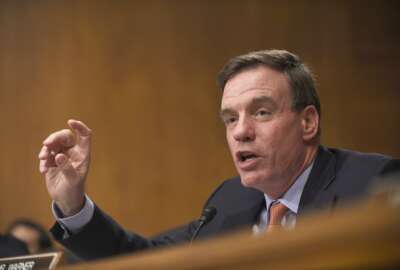

The space agency released its entire source selection document for why it chose SAIC over CACI for a $447.8 million award.
NASA made a $447.8 million award to SAIC in January to run one of the follow-on contracts under its I3P umbrella program. SAIC will continue to hold the Enterprise Applications Services Technologies 2 (EAST) contract. The company won the initial deal in 2010 under a 5-year, $321 million contract.
What’s most interesting about this award isn’t the fact SAIC won, or the fact that NASA’s decision survived a protest by CACI. The Government Accountability Office denied CACI’s protest in late April.
What really stands out about this entire process is NASA’s decision to release on FedBizOpps.gov its source selection document.
The 16-pager details NASA’s entire evaluation process for both bidders — SAIC and CACI. It outlines the strengths of each company’s proposal and why SAIC and CACI earned the evaluation scores they did.
Several long-time government contracting attorneys were shocked NASA would release such a document publicly.
“Generally, the source selection document is protected from disclosure from the Freedom of Information Act, but the agency can still decide to release it,” said Bill Shook, a long-time government contracts attorney. “This type of source selection document is one that I have seen hundreds of times, but always under a protective order.”
Tony Franco, a senior partner with PilieroMazza law firm, said seeing an unredacted version of this document is highly unusual.
Both Shook and Franco say NASA isn’t breaking any rules by releasing it because the Procurement Integrity Act does not prohibit the release of such information after an award is made.
And that is the crux of what’s going on here. NASA is taking advantage of a rule in the law to promote transparency about a major award.
Other agencies should learn from this approach, especially as concerns about bid protests, inefficient government-industry communication and the growing perception that agencies are using the lowest-price technically acceptable (LPTA) approach too much continue to rise.
Bill McNally, NASA’s assistant administrator for procurement and deputy chief acquisition officer, said the space agency has been releasing source selection documents like this one for the better part of a decade.
“We are trying to be transparent,” he said. “Protests happen, sometimes we learn from them and sometimes it’s just part of the procurement process. And we’ve had situations where offerors who didn’t get selected and share our selection statement with the press. So we just decided to make it our policy to release them all.”
McNally said NASA also makes it a point to tell contractors bidding on a specific procurement who the source selection authority is so they don’t try to influence the process knowingly or unknowingly.
“We try to make sure the document can stand on its own in front of a protest,” he said. “With some selection statements on major acquisitions, we didn’t get called in for a hearing with GAO even when the award gets protested because of how good these statements are. We think our selection statements are pretty good, and we try to make sure they’re concise and not too long.”
Shook said other agencies should learn from NASA and better position their awards to withstand a protest.
“As long as the source selection document is well written, can withstand logical scrutiny, GAO will deny the protest, no matter price difference,” he said. “If I were a source selection official, I’d be interested because this is how a well written one passes a protest, and it could be used as a guide.”
This type of transparency should be lauded and emulated by industry and government alike. I’ve written many times over the last few years about the problems agencies and contractors have in communicating. The Office of Federal Procurement Policy’s mythbusters campaign had limited success. The environment seems to be forever getting more contentious especially as acquisition budgets decrease and large, multiple award contracts continue to be hotly contested.
Copyright © 2024 Federal News Network. All rights reserved. This website is not intended for users located within the European Economic Area.
Jason Miller is executive editor of Federal News Network and directs news coverage on the people, policy and programs of the federal government.
Follow @jmillerWFED


